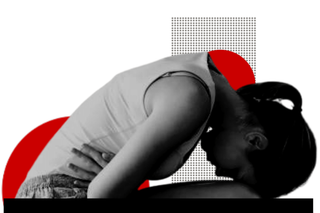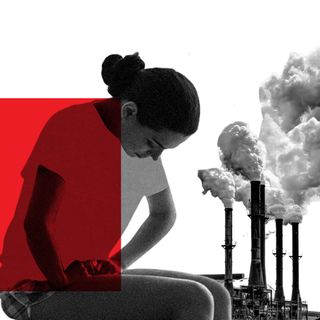
Endometriosis Impacts Women’s Careers but Is Often Overlooked, Research Suggests
Women with endometriosis are often less able to work in their desired profession — raising concerns about the lack of understanding around the condition.

Endometriosis, a condition that causes chronic pain and fatigue, adversely impacts women’s careers by disrupting their productivity and is linked to lower annual salaries, according to a new study.
Endometriosis is often called an “invisible illness” — owing to no definitively known cause or cure. The gynecological disorder is characterized by abnormal growth of tissue outside the uterus — including the ovaries, fallopian tubes, or bladder. It presents with chronic pain and heavy menstrual bleeding, along with a range of other symptoms such as fatigue and tiredness. Globally, around one in ten people assigned female at birth between 15-49 experience endometriosis.
In India, 25 million women are estimated to be suffering from the condition. The severe pain and mental health fallout from endometriosis can make it exceedingly difficult for women to choose and plan career paths according to their interests and desires, as numerous testimonies have shown. Relatively few medical advances have been made in studying and treating endometriosis, and workplaces consequently do not accommodate it as a serious medical condition.
The study, published in Acta Obstetricia et Gynecologica Scandinavica, included 4,000 women; it was the first to examine how endometriosis impacts older professionals at work. Women at age 46 with endometriosis were found to take more disability days — approximately 10 more than others.
“Due to the need to promote sustainable careers in aging societies, the identification of health conditions associated with poor career outcomes is of critical importance. However, the role of chronic gynecological diseases such as endometriosis, remains poorly understood,” the study noted, showing how the disease presents itself during education and working ages in women.
Interestingly, the condition was earlier known pejoratively as the “career woman’s” disease because it was thought that women who pushed marriage and chose their careers were affected by this condition. But the study joins a growing repository of evidence that the condition adversely impacts women’s careers rather than being caused by it.
Related on The Swaddle:
What It’s Like To Live With: Endometriosis
The lack of research has a lot to do with the make-up of the condition in itself. The condition is also associated with a higher risk of fibromyalgia, chronic fatigue syndrome, and autoimmune inflammatory diseases. An early diagnosis is crucial for managing pain and symptoms, experts say.
A combination of factors such as late diagnosis and expensive diagnostic procedures combine to make endometriosis nearly unbearable for many women, impacting their quality of life and work in the process.
It is a well-established fact that women are less likely to have their pain taken seriously in the medical system. A 2018 study entitled “Brave Men” and “Emotional Women” found that women’s pain is often dismissed as psychological, due to the absence of visible illness.
As a result, it tends to be neglected in medical research and settings. Very often, patients with endometriosis are dismissed or remain undiagnosed for this reason — the overall phenomenon is known as the gender health gap, or the gender pain gap. This has harmful implications for women living with endometriosis, who have fewer treatment options and find it more difficult to manage their symptoms because of how their pain is taken less seriously.
In general, women’s bodies are treated by medicine as chimeras of hormones; rendering them incomprehensible, mysterious, and complicated. Sexist perceptions of hysteria and emotion associated with women also mean that they are seen to have lower pain thresholds.
Advocacy groups have outlined dos and don’ts of how workplaces should accommodate employees with the illness, but there is still little understanding of its severity — it is often conflated with “regular” menstrual cramps.
In India, endometriosis diagnosis is further fraught with dated and unscientific myths — patients are advised to marry and start families early for relief. But this is not a viable option for many. Women who choose not to start families — early, or even at all — should not be compelled to do so due to a lack of research into the causes and cure of the disease afflicting them. Such notions also contribute to the “career women’s disease” trope, which is damaging for both women’s health and professional lives.
Although the Finnish study found no correlation between endometriosis and early retirement or rates of employment, it is important to note that Finland has robust healthcare and social systems that may offer better access to treatment options for all women. But little is known about how these trends change in countries without these social security nets.
A lack of support from medical research and work cultures weaponizes endometriosis — making it a tool to discriminate against professionals, and terming them as low-performing or unable to cope with work schedules. In the end, it remains urgent to bolster research and support around patients — both physical and emotional.
Rohitha Naraharisetty is a Senior Associate Editor at The Swaddle. She writes about the intersection of gender, caste, social movements, and pop culture. She can be found on Instagram at @rohitha_97 or on Twitter at @romimacaronii.
Related


How I Have Sex: ‘With Women, You’re Guaranteed to Cum; With Men, They’re Guaranteed to Cum’
